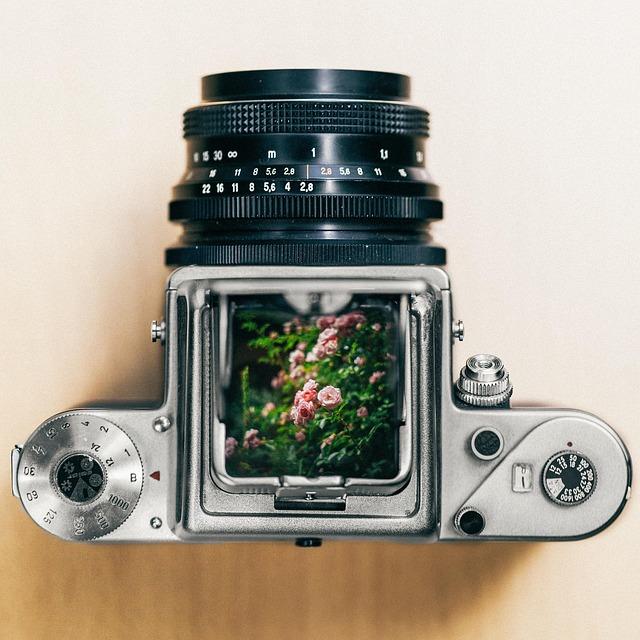Step into a world where creativity knows no bounds, a realm where cinematic magic comes to life through the power of DaVinci Resolve 18. In this tutorial, we will unravel the secrets of anamorphic filmmaking and explore the endless possibilities it brings to your video projects. Get ready to unlock the essence of visual storytelling as we embark on a journey that will elevate your editing skills to new heights. Join us as we delve into the mesmerizing world of anamorphic magic and unleash the full potential of DaVinci Resolve 18.
Unlocking Anamorphic Characteristics Using Normal Spherical Lenses
Using normal spherical lenses to unlock anamorphic characteristics can be a game-changer in your videography journey. By simulating the effects of anamorphic lenses through clever techniques in DaVinci Resolve, you can elevate your footage to new heights. One key aspect to consider is the field of view difference between spherical and anamorphic lenses. Anamorphic lenses squeeze the image onto the sensor, resulting in a wider horizontal field of view compared to vertical. By understanding this, you can replicate the look with precision, ensuring your shots mirror the characteristics of true anamorphic lenses.
Moreover, in the world of anamorphic magic, factors like distortion, flares, bokeh, and sharpness fall-off play a vital role in crafting that unique visual aesthetic. DaVinci Resolve offers tools like the barrel distortion effect and flare filter to mimic these characteristics, although with some creative finesse required. Achieving the signature oval-shaped bokeh of anamorphic lenses poses a challenge, but with dedication and experimentation, it’s possible to add that extra touch of cinematic allure to your videos. Remember, while you can emulate aspects of the anamorphic look digitally, nothing beats the authenticity of shooting with a true anamorphic lens for that unparalleled visual charm.
Understanding Field of View and Composition in Anamorphic Look
is crucial when aiming to achieve that coveted anamorphic magic in your video projects. Anamorphic lenses bring a unique visual experience with characteristics like distortion, field of view, flares, and bokeh that add depth and dimension to your footage. When wondering if it’s possible to fake the anamorphic look using a normal spherical lens and post-production tweaking in DaVinci Resolve, the answer is a bit complex yet doable. By adjusting the field of view and composition, you can closely replicate the visual effects of an anamorphic lens using a spherical lens and strategic cropping techniques.
In the realm of anamorphic cinematography, understanding the squeeze factor and horizontal field of view is key to achieving that cinematic look. Anamorphic lenses squeeze the image onto the sensor, leading to a wider horizontal field of view compared to a spherical lens. By manipulating distortion, sharpness fall-off, flares, and bokeh in DaVinci Resolve, you can enhance your footage to mimic the characteristics of anamorphic lenses. While it may not be an exact replica, with practice and experimentation, you can elevate the visual appeal of your videos and unlock the magical allure of anamorphic storytelling.
Recreating Anamorphic Distortion and Flares in DaVinci Resolve
opens up a world of creative possibilities for filmmakers and video enthusiasts. With the right techniques and tools, it’s possible to emulate the unique characteristics of anamorphic lenses, including distortion, field of view, flares, and bokeh. Understanding how anamorphic lenses work, such as squeezing the image horizontally onto the sensor to achieve a wider field of view, is key to recreating their distinctive look. By utilizing a normal spherical lens, cropping the top and bottom of the footage, and adding effects in DaVinci Resolve, you can closely mimic the visual qualities of an anamorphic lens.
In DaVinci Resolve, one can recreate anamorphic distortion by utilizing techniques such as the barrel distortion effect or the warper effect on the color page. These tools allow for the manipulation of the image to replicate the characteristic distortion of anamorphic lenses, particularly noticeable towards the edges of the frame. Additionally, creating flares, a hallmark of anamorphic lenses, can be achieved using the flare effect in DaVinci Resolve with presets and customizable settings. While replicating the exact optical effects of anamorphic lenses digitally presents challenges, with practice and experimentation, users can come close to capturing the magic of anamorphic visuals in their projects.
Challenges of Simulating Anamorphic Bokeh in Editing
When it comes to simulating anamorphic bokeh in editing, one of the major challenges is accurately replicating all the unique characteristics such as distortion, field of view, flares, and bokeh that are synonymous with anamorphic lenses. The process involves using a normal spherical lens and then cropping the top and bottom of the frame while adding specific effects in DaVinci Resolve to mimic the anamorphic features. Understanding the field of view is crucial when working with anamorphic lenses, as they squeeze the image onto the sensor, resulting in a wider horizontal field of view compared to the vertical field of view. This distinction plays a key role in achieving the desired anamorphic look.
In DaVinci Resolve, emulating anamorphic distortion can be challenging but achievable. Anamorphic lenses often exhibit distortion, especially towards the edges of the frame, affecting horizontal lines. Using tools like the barrel distortion effect or the warper effect in Resolve allows for some level of recreation of this distortion. Additionally, creating the typical sharpness fall-off towards the edges, mimicking anamorphic lenses, and incorporating flares can add to the authenticity of the simulated anamorphic look. While faking the oval and elongated bokeh of anamorphic lenses poses a more significant challenge, utilizing specific techniques within Resolve can help approximate this effect, albeit with some limitations. Ultimately, while it is possible to imitate the anamorphic look digitally, it’s essential to understand that it may not precisely replicate the unique characteristics of genuine anamorphic lenses.
Q&A
Q: Is it possible to fake the anamorphic look with all its characteristics using a normal spherical lens and adding effects in DaVinci Resolve?
A: Absolutely! It is indeed possible to mimic the anamorphic look using a normal spherical lens and some effects in DaVinci Resolve. By cropping the top and bottom of the image and playing around with settings like distortion, field of view, flares, and bokeh, you can achieve a similar aesthetic to that of an anamorphic lens.
Q: How does the field of view work with anamorphic lenses compared to spherical lenses?
A: Anamorphic lenses have a unique way of squeezing the image onto the sensor, resulting in a wider horizontal field of view compared to the vertical field of view. This characteristic is what gives anamorphic footage its distinctive look and allows for a more cinematic feel when shooting with these lenses.
Q: What techniques can be used in DaVinci Resolve to recreate anamorphic effects like distortion and sharpness fall off?
A: In DaVinci Resolve, you can utilize tools like the barrel distortion effect or the warper effect to recreate the distortion typically seen in anamorphic lenses. Additionally, adding a blur effect can help simulate the sharpness fall off observed in anamorphic footage, especially towards the edges of the frame.
Q: How can one achieve the signature horizontal flares associated with anamorphic lenses?
A: Creating those iconic horizontal flares in post-production can be a bit tricky but achievable. By using a flare filter or the flare effect in DaVinci Resolve, you can adjust settings and colors to customize the flares to your liking. Furthermore, utilizing the tracking feature can help make the flares dynamic and follow specific objects within the frame.
Q: What challenges are faced when attempting to replicate the bokeh effect of anamorphic lenses?
A: The bokeh effect, characterized by the oval and elongated out-of-focus backgrounds of anamorphic lenses, poses a more significant challenge to recreate digitally. While widening the aperture can help achieve a similar blur effect, mimicking the oval shape of the bokeh requires meticulous adjustments using tools like magic mask and lens blur effects, but achieving perfection may be nearly impossible.
while it is possible to fake the anamorphic look to a certain extent using normal lenses and editing software like DaVinci Resolve, it’s essential to acknowledge that it will never perfectly replicate the optical effects of authentic anamorphic lenses. Each type and brand of anamorphic lens carries unique characteristics that are challenging to mimic entirely, making them a valuable investment for filmmakers aiming to capture that distinct cinematic quality in their footage.
Wrapping Up
As we wrap up this journey into the world of anamorphic magic through the lens of DaVinci Resolve 18, let’s reflect on the fascinating process of unlocking the secrets behind emulating the distinctive characteristics of anamorphic lenses. The burning question that often arises is whether it’s feasible to mimic the anamorphic look with all its nuances like distortion, field of view, flares, and bokeh using a standard spherical lens and post-production effects in DaVinci Resolve. The answer lies in the intricate dance between creativity and technical know-how.
Delving deeper, we uncover the essence of field of view with anamorphic lenses, where the vertical and horizontal perspectives intertwine to create a unique visual spectacle. By experimenting with cropping and editing techniques, we unveil the uncanny resemblance between a cropped spherical lens and a genuine anamorphic lens, highlighting the artistry behind the craft.
Moving on to the realm of distortion, we navigate the waters of horizontal lines and angular manipulations, striving to recreate the signature look of anamorphic lenses through the lens of DaVinci Resolve. The journey continues as we explore the delicate balance of sharpness falloff, flares, and bokeh, each adding layers of depth and character to our visual narrative.
While the prospect of replicating the anamorphic aesthetic is within reach, it’s essential to remember that digital emulation can only capture a fraction of the true essence of anamorphic lenses. The allure of authenticity beckons filmmakers to embrace the unique qualities of specific anamorphic lenses, acknowledging that each holds a story waiting to be told.
As we bid farewell to this tutorial, let’s cherish the art of storytelling, knowing that while we may unlock anamorphic magic in our creations, the true magic lies in the journey of relentless experimentation and boundless creativity that fuels our passion for visual storytelling. Thank you for joining us on this adventure, and until next time, keep dreaming, creating, and exploring the endless possibilities that await.
